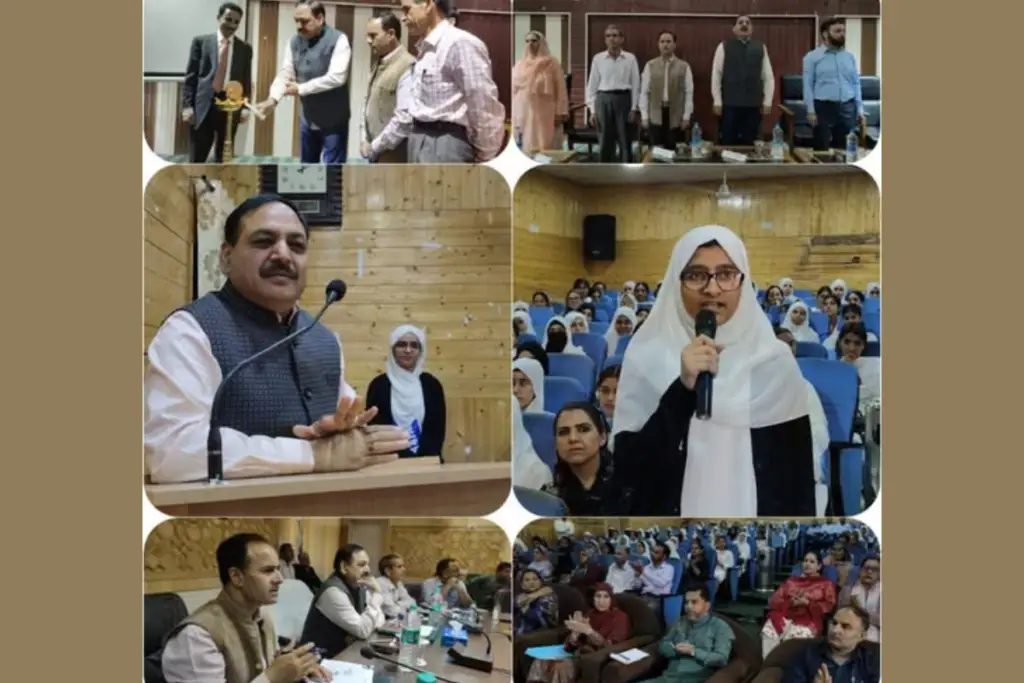A Not So Loud but Yet Powerful Change Among Indian Schools
India is witnessing a concealed yet notable educational transformation which is finding its way through the school system. There are a few people behind the scenes who are not visible, at the national level, who are piloting the policies with one major goal: empower students at the center of the education process.
The system, which earlier was just training children to memorize and score in exams, is now being meticulously redeveloped. This time around, it’s not about just a little change in the syllabus — it’s about the students’ emotions, thoughts, and the way they learn at school that has to be transformed.
An Innovator’s Tools For A New Generation
Currently, there is a project happening in many of the schools in Jammu & Kashmir that is embracing new approaches in learning. Such methods include interactive classrooms, digital learning tools, and playful activities that help students understand the learning content. From painting local cultural stories on walls to enabling lessons with AI, the mission is crystal clear – bring the spark back in teaching and learning.
Students are given the liberty not just to speak but also to express their creativity, explore technological innovations through coding or, even the robotics field at a quite tender age. It’s not just for children to be tech-savvy; it’s about getting young minds ready for the rapidly changing world.
Reform that caters to Foundational Learning and Early Childhood
One of the significant changes, at the top, with a refocusing on the essentials of literacy and numeracy, is regarded as the biggest game-changer. The main objective of the new reforms is that children should start learning from the age of 3 to 8 years — the formative years when children’s cognitive development is the most rapid.
Special programs have been initiated to the train the primary teachers, develop a new curriculum for the kindergartens, and engage parents more intensively in the process of the kids’ education. These actions are believed to be the most effective way to remove gaps in learning in the early stages of schooling, and to keep students from dumping out.
Reimagining Girls’ Education
The wider context of the academic focus is concentrated on the significant endeavor of improving girls’ literacy, especially in remote and underprivileged areas. The development of new community outreach programs is under the way so as to urge families to send their girls to school and keep them through upper classes.
Schools in districts where girls prior to secondary school have been accustomed to quitting their studies before were made more attractive, students were educated about menstrual hygiene, and they had the opportunity to participate in skills training sessions.
Keeping Culture Alive In Classrooms
The integration of local culture and language into school environments is an interesting idea in education innovation. The aim is to not only help students establish a link between learning and their background but also to ensure that they feel not culturally isolated as a result of it.
Teachers used wall murals depicting Kashmiri folklore to start the topic and children of the villages also participated in storytelling sessions which were part of local festivals, thus schools became the mirror of the communities where they were located.
Listening To Students And Teachers
The center of these reforms being student-centric is the way in which the feedback is being gathered and employed. In the past, leaders in education were frequent school visitors but only for inspections, today they are encouraged to have real, meaningful talks with both students and teachers. Teachers are given a voice to express their classroom difficulties, while students are asked about their ideas on how the learning process could be improved.
This interactive tour of the perceptions of the public is not only driving policy change directly but is also a vivid departure from the traditional method where orders came from the top anyway.
What This Means For Parents And Students
If your child’s school in India were to undergo these changes, you could expect the school to be drastically different from what it is today. You can look forward to the following:
- A more vibrant and engaging classroom environment
- Curriculum that fosters inquisitiveness and analytical skills
- The student-teacher ratio, specifically in the young grades, will be much better
- The co-curricular program will be more extensive, such as sports, art workshops, and storytelling
- Students will have an easier time moving to the next grade and less of the transition will be difficult
But what is most highlighted is kids who are likely to have a very positive learning atmosphere, which not only honors their intellect and their person but also their emotional and social sides.
A Future Built Around The Learner
The Indian education system has come under a lot of fire for being archaic, tedious exams, and relieving the stress of endless tests. However, these subtle transformations indicate something different — a sensible and gradual shift towards the humanization of education.
The educational message is this: schools aim to provide young people not only with knowledge but also with opportunities for personal development and the chance to relate to society.
It is not definite thus far if these reforms will spread across all states and further what will happen next, albeit students in chosen areas are currently ending up with a first-hand account of the concept of education which they themselves had suggested. That might not happen, but for now, appropriate students in part of the region are reaping the benefits of education that was designed in congruence with their needs, desires, and preferences.
